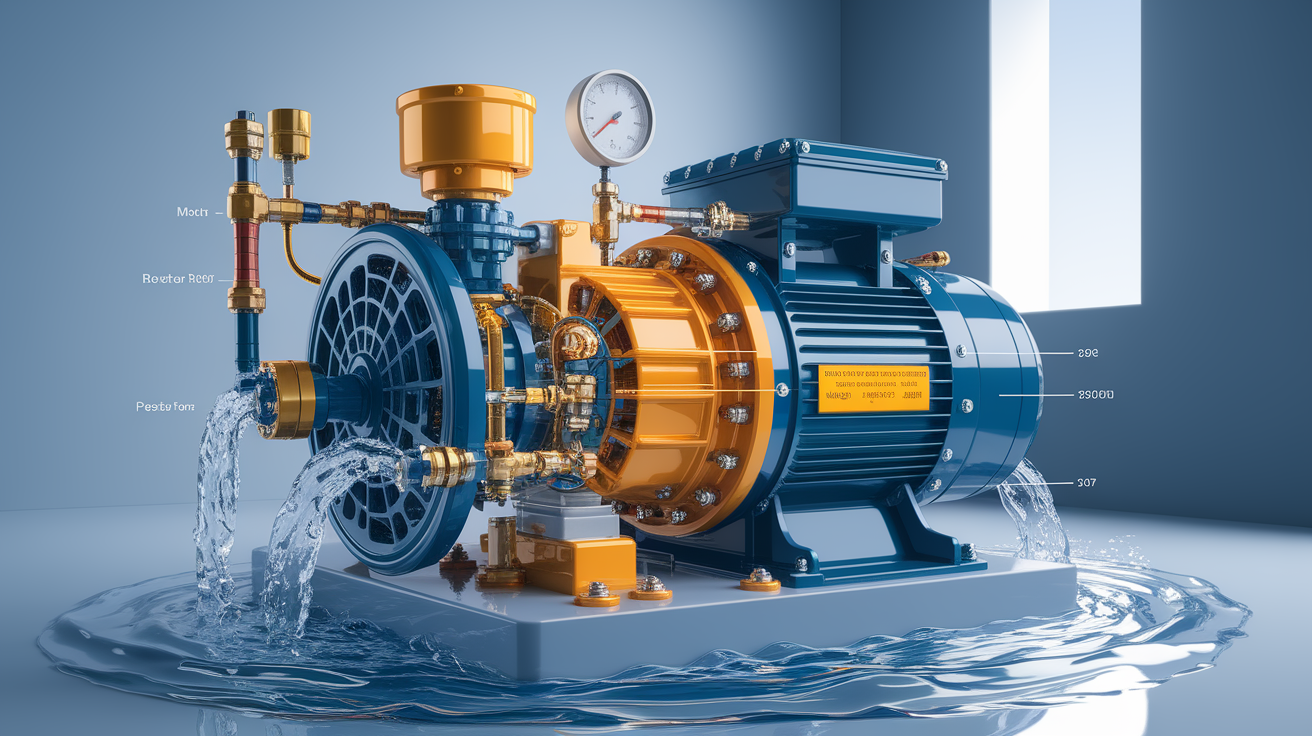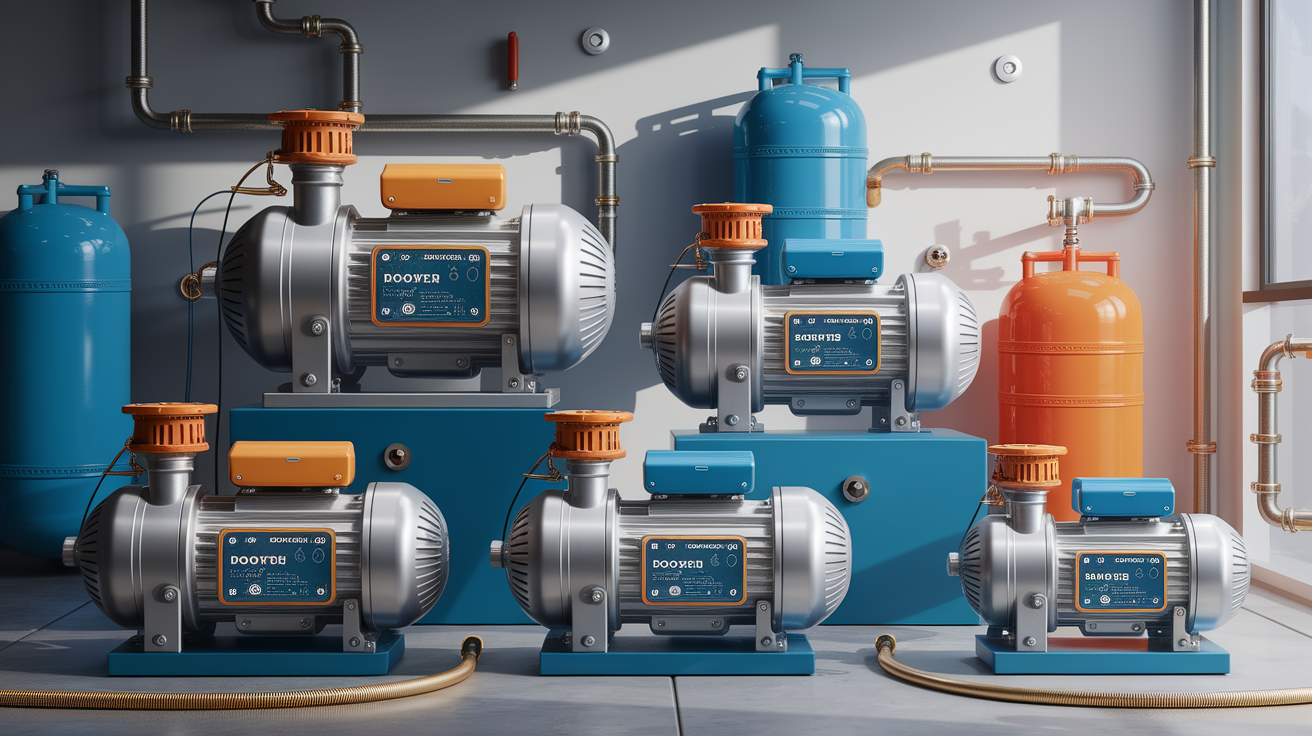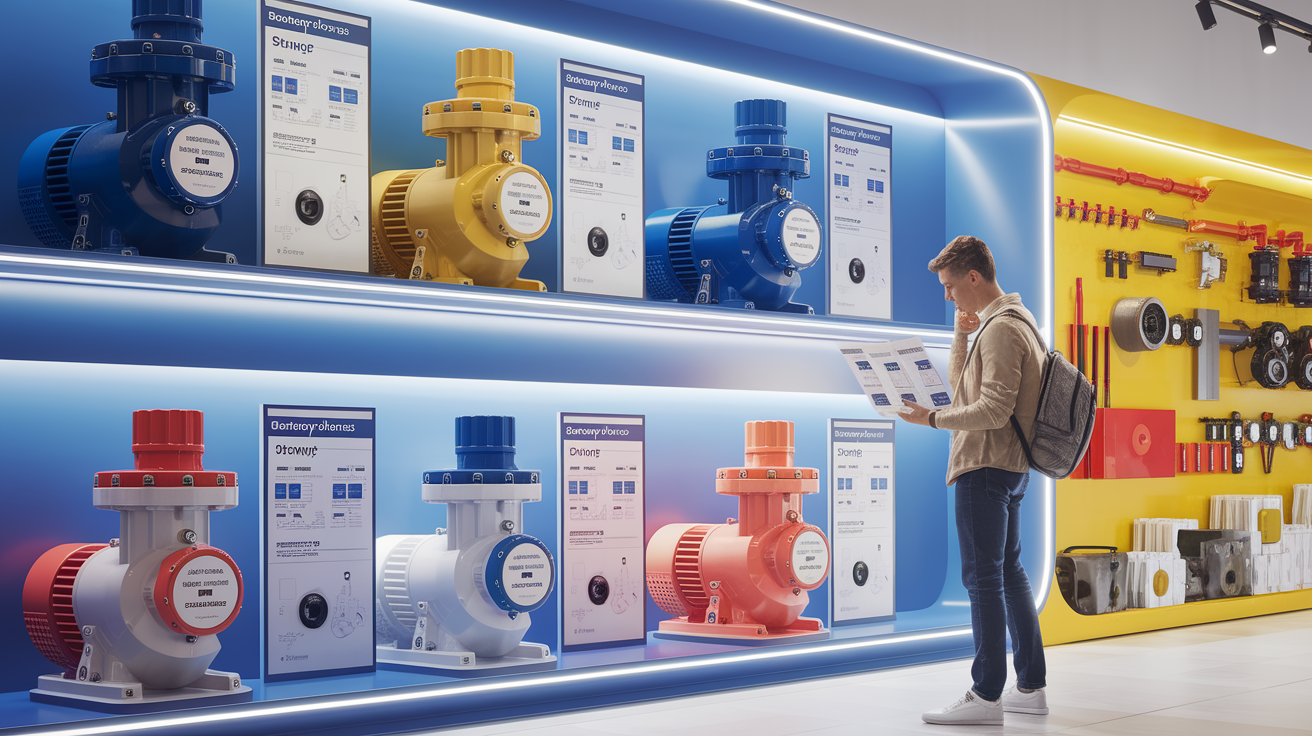Introduction – Pressure Perfect: Instant Relief for Weak Water Flow
Nothing ruins a morning routine quite like weak water pressure. Struggling with trickles instead of streams while showering, waiting endlessly for appliances to fill, or watching your garden sprinkler barely reach the flower beds are telltale signs of home water pressure issues that can turn everyday tasks into frustrating ordeals.
Low residential water pressure affects millions of homes across the country, whether you’re connected to municipal water supplies or relying on a private well system. The good news? You don’t have to live with inadequate flow. Water pressure booster pumps offer an effective solution for fixing low water pressure in an old house or any property suffering from weak water flow.
These specialized devices integrate with your existing plumbing system to significantly increase water pressure throughout your home, ensuring strong, consistent flow even when multiple fixtures are used simultaneously. Whether dealing with municipal supply limitations, well water challenges, or aging infrastructure, an appropriately sized booster pump can transform your water experience.
How Water Pressure Booster Pumps Work
Water pressure booster pumps address low water pressure by introducing an auxiliary pump to your home’s water supply system. These devices operate on a straightforward principle: they add mechanical energy to increase the pressure and flow rate of water moving through your pipes.

The Basic Mechanism
At their core, booster pumps draw in water at whatever pressure it arrives at your property, then use an electric motor to increase that pressure before distributing it throughout your home. This pump boosting process ensures water reaches all fixtures with sufficient force, even those farthest from the main supply or on upper floors.
Pressure Tank Systems
Most residential booster pumps utilize specialized tanks partially filled with air to store pressurized water. Here’s how the system works:
- The pump fills the tank with water, compressing the air pocket at the top
- When the pressure reaches a preset level, the pressure switch turns off the pump
- As water is used in the home, the compressed air pushes water out at a consistent pressure
- When pressure drops below the threshold, the pump activates again to refill the tank
This cycling system ensures consistent water pressure without requiring the pump to run continuously, extending its lifespan and improving energy efficiency.
Expansion Tanks and Pressure Regulation
Many systems incorporate expansion tanks to handle thermal expansion and pressure fluctuations. As water heats up in your system, it expands, potentially creating excess pressure. The expansion tank provides space for this expanded water, preventing pressure spikes that could damage your plumbing.
The relationship between pressure and flow follows characteristic curves where increased pressure typically reduces flow rate. Modern booster pumps are designed to optimize this balance, providing the ideal combination of pressure and flow for residential applications.
Types of Booster Pumps for Homes
When exploring water pressure booster pumps for your home, you’ll encounter several distinct types, each with specific advantages for different situations:

Single-Stage Centrifugal Pumps
These are the most common and affordable options for residential applications:
- Best suited for mild to moderate pressure boosting needs
- Typically provides 10-15 PSI of additional pressure
- Simple design with fewer moving parts
- Lower initial cost than multi-stage alternatives
Multi-Stage Centrifugal Pumps
For homes with more severe pressure issues or larger properties:
- Can increase pressure by 30+ PSI
- More efficient for higher-pressure applications
- Ideal for the best water pressure booster pump for large homes
- Brands like Grundfos and DAB PUMPS offer reliable multi-stage options
Constant Pressure Systems
The most advanced option for homes with variable demand:
- Uses variable speed technology to maintain consistent pressure regardless of demand
- Eliminates pressure fluctuations when multiple fixtures are used simultaneously
- More energy-efficient as the pump only works as hard as needed
- Quieter operation with less cycling on and off
- Particularly beneficial for water pressure booster pump for multiple fixtures
Well Pump Boosters
Specialized systems for homes on private wells:
- Designed to work with existing well pumps
- Often incorporate larger storage tanks to accommodate well recovery rates
- Help manage demand from low-recovery wells
- Can significantly improve shower pressure and appliance performance in well-supplied homes
Each system type offers different capabilities regarding flow rate (GPM), pressure increase, and control mechanisms. Understanding these differences is crucial when selecting the right system for your specific home water pressure issues.
Choosing the Right Booster Pump
Selecting the appropriate water pressure booster pump requires carefully considering your situation. Here’s how to determine what you need:

Assessing Your Current Pressure
Before shopping for solutions, measure your existing water pressure:
- Purchase an inexpensive pressure gauge that attaches to an outdoor spigot
- Test during peak usage times and when water use is minimal
- The ideal water pressure for a home typically ranges from 40-60 PSI
- If your readings consistently fall below 40 PSI, a booster pump may be beneficial
Determining Required Flow Rate
Proper pump sizing depends on your household’s maximum water demand:
- Count the number of fixtures and appliances that might run simultaneously
- Calculate total flow requirements (typically measured in GPM or gallons per minute)
- A typical shower uses 2-5 GPM
- A washing machine requires 3-5 GPM
- Dishwashers need approximately 2-3 GPM
- Add a 20% buffer for unexpected demand
For example, if you might simultaneously run a shower (4 GPM), a washing machine (4 GPM), and a kitchen faucet (2 GPM), you’d need a system capable of handling at least 12 GPM with the desired pressure increase.
Matching Pump to Water Source
Different water sources require specific pump configurations:
| Water Source | Recommended Pump Type | Special Considerations |
|---|---|---|
| Municipal Supply | Standard booster pump | Check local codes regarding backflow prevention |
| Private Well | Well pump booster with storage | Must account for well recovery rate |
| Rainwater Collection | Multi-stage with filtration | Additional filtration requirements |
Key Features to Consider
When comparing models, evaluate these essential features:
- Pressure switch quality: Determines reliability of automatic operation
- Noise level: Some pumps operate more quietly than others
- Tank size: Larger tanks reduce pump cycling for longer pump life
- Control systems: From basic pressure switches to smart controllers
- Energy efficiency: Look for models with high efficiency ratings
- Warranty: Better pumps typically offer longer coverage
Choosing the right size water booster pump is critical—too small and it won’t solve your pressure problems; too significant and you’ll waste energy and money while potentially creating new plumbing issues.
Installation and Maintenance Tips
While professional installation is recommended for most water pressure booster pump systems, understanding the process helps you make informed decisions and properly maintain your investment.
Installation Basics
Booster pump installation typically follows these steps:

- Location selection: Install in a dry, accessible area near your main water line, typically after the water meter but before any branch lines
- Shut off water: Turn off your main water supply before beginning work
- Cut and prepare pipes: Remove a section of pipe where the pump will be installed
- Install shut-off valves: Place valves before and after the pump location for easier maintenance
- Mount the pump: Secure to a solid surface following manufacturer guidelines
- Connect plumbing: Attach inlet and outlet pipes, ensuring proper alignment
- Install pressure gauge: Add a gauge to monitor system performance
- Connect electrical: Wire the pump to an appropriate electrical circuit (often requiring a dedicated circuit)
- Prime the pump: Fill with water before first operation if required
- Adjust settings: Set pressure thresholds according to your needs
Many manufacturers include detailed installation water pressure booster pump diagrams in their documentation. Following these precisely helps ensure proper function and prevent warranty issues.
DIY vs. Professional Installation
While some experienced DIYers successfully install simple booster systems, consider these factors before deciding:
- Professional installation typically costs $300-$800 beyond equipment
- DIY installation requires plumbing and basic electrical skills
- Improper installation can void warranties
- Local building codes may require licensed installation
- Complex systems with storage tanks or well integration generally warrant professional installation
Maintenance Requirements
To maximize system lifespan and performance:
- Monthly checks: Monitor pressure readings and listen for unusual noises
- Quarterly inspection: Check for leaks around fittings and connections
- Annual maintenance:
- Check and adjust air pressure in the tank (typically 2 PSI below pump start pressure)
- Inspect electrical connections for corrosion
- Verify pressure switch operation
- Clean any filters in the system
- Every 5-7 years: Consider replacing the pressure tank bladder or diaphragm
Troubleshooting Common Issues
When troubleshooting low water pressure with a booster pump, check these common problems:
- Pump cycles too frequently: Often indicates a waterlogged tank or incorrect pressure settings
- Pump runs continuously: May signal a leak, faulty pressure switch, or undersized system
- Pressure fluctuations: Could indicate air in lines or pressure switch issues
- Unusual noises: Often caused by cavitation, air in the system, or mechanical problems
- Low output pressure: Possibly due to clogged filters, worn impellers, or incorrect settings
Keeping a maintenance log helps track performance over time and identify developing issues before they become major problems.
Cost, Energy Use, and Long-Term Benefits
Initial Investment
The cost to install water pressure booster pump systems varies based on type, capacity, and complexity:
- Basic single-stage systems: $300-$800 for equipment only
- Mid-range systems with pressure tanks: $800-$1,500
- Premium constant-pressure systems: $1,500-$3,000+
- Professional installation: Typically adds $300-$800
While the initial investment may seem substantial, it’s essential to consider the long-term benefits and improved quality of life that comes with proper water pressure.
Energy Consumption
Water pressure booster pumps do consume electricity, but modern systems are increasingly energy efficient:
- Typical systems use 500-1,500 watts when running
- Annual energy costs range from $50-$200 depending on usage patterns and local electricity rates
- Variable-speed pumps can reduce energy consumption by 30-50% compared to conventional models
- Tank-based systems run intermittently, reducing overall energy use
Select an appropriately sized pump to minimize energy consumption and consider energy-efficient models with sound insulation and intelligent controls.
Lifespan and Return on Investment
Quality water pressure booster pumps typically last 8-15 years with proper maintenance. Factors affecting longevity include:
- Quality of components (particularly the motor and pressure switch)
- Frequency of cycling (systems that cycle less tend to last longer)
- Water quality (sediment and minerals can accelerate wear)
- Proper installation and maintenance
The return on investment comes through improved appliance efficiency, reduced water waste, and enhanced quality of life. For example, dishwashers and washing machines often run more efficiently with proper pressure, potentially extending their lifespan and reducing water consumption.
Home Value Impact
Installing a water pressure booster system can positively affect your home’s value, particularly if low water pressure is common in your area. Real estate professionals note that water pressure problems often appear on home inspection reports and can become negotiation points during sales.
A properly designed booster system can be especially valuable for homes with private wells. It will demonstrate to potential buyers that water supply issues have been professionally addressed.
Conclusion – Strong Flow, Happy Home: Your Path to Optimal Water Pressure
Inadequate water pressure doesn’t have to be a permanent fixture in your home. With the right water pressure booster pump, you can transform frustrating trickles into satisfying streams, ensuring every shower is refreshing, every appliance operates efficiently, and every garden hose delivers the pressure you need.
When selecting a system, remember to:
- Accurately measure your current pressure and flow requirements
- Choose a pump type that matches your specific situation
- Consider long-term energy costs alongside initial investment
- Follow proper installation procedures or hire a qualified professional
- Maintain your system regularly for maximum lifespan
Whether dealing with municipal supply limitations, well water challenges, or the quirks of an older home’s plumbing system, today’s booster pump technology offers practical solutions for virtually any low water pressure scenario.
With the right system in place, you’ll wonder how you ever managed with anything less than perfect pressure—and your entire household will appreciate the difference that consistent, powerful water flow brings to everyday life.
Frequently Asked Questions
How do I know if I need a water pressure booster pump?
If your water pressure consistently measures below 40 PSI, fixtures produce weak streams, multiple water uses cause significant pressure drops, or upper floors have noticeably lower pressure than lower levels, a booster pump may be beneficial.
What causes low water pressure in my home?
Common causes include municipal supply limitations, elevation issues, undersized supply pipes, well pump inadequacies, clogged pipes or fixtures, pressure regulator problems, and peak demand periods in your neighborhood.
What size booster pump do I need for my house?
Size depends on your maximum simultaneous water demand (in GPM) and desired pressure increase. A typical 3-bedroom home often requires a pump capable of 10-15 GPM with a pressure boost of 20-30 PSI.
Do booster pumps work with well water?
Yes, booster pumps work excellently with sound water systems. They’re particularly valuable for wells with low recovery rates, as they can pair with storage tanks to provide consistent pressure even when well output is limited.
How long does a water pressure booster pump last?
Quality booster pumps typically last 8-15 years with proper maintenance. Regular checks and servicing of the pressure switch, tank bladder, and electrical components can extend this lifespan considerably.








